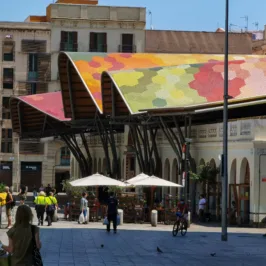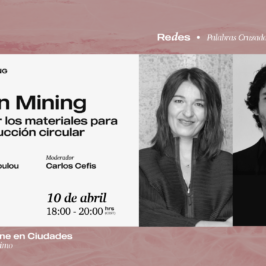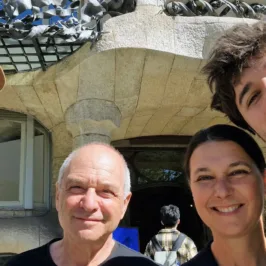The Architect Rebuilding a Country.

Good-looking, charming and a celebrity in his native Chile, the surprise winner of this year’s Pritzker cares more about solving social problems than exercising his artistic chops.
THE EARTHQUAKE, one of the biggest ever recorded, hit in the middle of a late February night in 2010. The real damage came 18 minutes later, with the tsunami, crashing from the Pacific up the estuary of the River Maule, where the small, hardscrabble city of Constitución nestles. More than 500 people died. Residents were left without homes, electricity and clean water.
The architect Alejandro Aravena was on a helicopter days later, surveying the damage. His firm, Elemental, and a team of consultants had been enlisted to put together a reconstruction plan. Arauco, the forestry company that employs thousands of workers in Constitución, had agreed to pay for it.
Aravena was picking at a plate of pernil in a truck stop, recalling what happened next, a story he has probably told a thousand times by this point. “Residents in Constitución naturally suspected, because we were working for the forestry company, that all the benefits of reconstruction would go to the company, not them,” he said. “That’s why we knew from the start that the people had to participate in the reconstruction process. In effect, we needed to create the right client. So we devised a consortium: Arauco, the government, the public and us. We were taking an intuitive approach because we actually knew nothing about planning. In the end, ignorance helped.”
Aravena polished off his beer when a stranger sidled up to the table. It happens all the time now. Drivers in passing cars stop him in the street. Shop clerks, politicians, long-lost acquaintances and schoolteachers ask for selfies with him. They all say the same thing. “Thank you,” the stranger said to Aravena, who smiled and posed arm in arm with the man for a picture. Thank you — as if the Pritzker prize, architecture’s Nobel, which Aravena had just won, had been awarded on behalf of everybody in Chile. “Even New Zealand has more heroes, they have the All Blacks,” Aravena half-jokes, about the famous rugby team. “We’re a small country. We hardly ever win anything.”

That said, Chile happens to be producing some of the world’s most gifted architects right now, a generation that includes Cecilia Puga, Sebastian Irarrazaval, Pezo von Ellrichshausen, Mathias Klotz, Teresa Moller, Smiljan Radic (“the best architect in the country,” Aravena tells me) and Aravena. On top of the prize, Aravena is directing the current Venice Architecture Biennale, whose socially minded show he has titled “Reporting From the Front.” Naturally, this has brought skeptics out of the woodwork. Young for an architect, at 48, they note, relative to other Pritzker winners he hasn’t built a lot; and some of his signature projects, including Constitución, are still in medias res, so it’s not entirely clear how they will actually turn out. Moreover, he and his partners at Elemental — Gonzalo Arteaga, Juan Ignacio Cerda, Víctor Oddó and Diego Torres — concentrate on social housing. “The more monotonous, dry, tough, the better,” as Aravena himself puts it. “Given that people will construct homes for themselves anyhow,” he elaborates, “this architecture gives order to their interventions.”
“We don’t think of ourselves as artists,” he adds. “Architects like to build things that are unique. But if something is unique it can’t be repeated, so in terms of it serving many people in many places, the value is close to zero. We go into fields where the chance of failing is higher than average. We make mistakes. If we need to replace a window or make some other fix, it’s easier for us because we’ve built up an account of good will.”
Meaning, overall, the work is not the poetry in glass or curvaceous spectacle that has tended to woo Pritzker jurors — one of whom, as it happens, Aravena used to be, until he quit the jury only a year ago. The prize clearly acknowledges a sea change in architecture, which not everyone agrees with. “Aravena,” sniffed Rowan Moore, critic for The Guardian,“has some of the trappings of the starchitect: a high media profile, a globe-trotting, lecture-giving lifestyle, a carefully cultivated look, a bizarre hairstyle (think desert roadkill) that seems to get spikier and more top-heavy with every transcontinental flight” — as if engaging in public debate about the built environment and the role of architects makes him a media hound. It’s the usual Catch-22: Architects who don’t speak out are hermits. As it happens, Aravena promised his family he wouldn’t leave Chile more than once a month, which, with site visits to far-flung projects, means he has time for three or four lectures a year, he told me.
Before arriving in Chile, I had been told by some of Aravena’s colleagues that he’s standoffish. I found him earnest, open, a little nerdy — and deadly serious. This is an era of unprecedented urban growth, much of it informal, which is to say illegal slum development. The total number of displaced people in the world now rivals the population of France. Climate change is reshaping the globe. For architects, today’s challenges and opportunities are historic. “In the name of artistic freedom, architects made themselves irrelevant,” Aravena says. “I think we may look back and see this as a tipping point.”
If so, one place we’ll look to is Constitución. After the tsunami, construction companies there floated the predictable and self-serving idea of erecting an immense protective sea wall, which would have made a kind of fortress, or prison, of the ravaged riverfront. It’s a proposal politicians love: A wall is an impressive-looking thing they can cut a ribbon standing next to. But residents, in public meetings, had bigger concerns. Tsunamis were rare. The city flooded regularly, they complained. There was next to no green space, inadequate housing, little access to the river, poor roads and miserable public buildings.
Tour the Venice Architecture Biennale on Facebook Live
This year’s director, Pritzker prize-winning architect Alejandro Aravena, takes us through the show, which, for a change, celebrates design that solves human problems. Join us live at facebook.com/tmagazine, this Thursday, May 26, at noon EST.









Leave a Reply